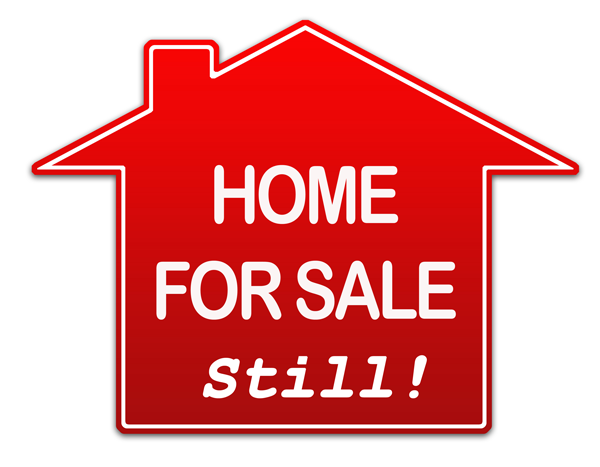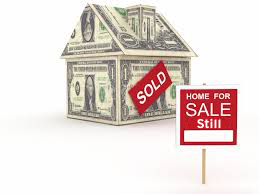Can’t Sell a House? DON’T Lower the Price. Do this Instead…
 Can’t Sell a House? DON’T Lower the Price. Do this Instead…
Can’t Sell a House? DON’T Lower the Price. Do this Instead…
It’s almost always cheaper to fix the problem than lower price!
Myth
If a home is not selling, reduce the price.
Fact
There is always something that can be fixed, which keeps a home from selling. It is almost always cheaper for the Seller to fix the problem, than to price for the problems so that the buyers will overlook them and have to consider it as part of their rationale for their lower offer.
In order to entice a buyer to consider a home with flaws, it is always costs more to reduce the price, than to fix the problems.
 Take for an example a townhome that I recently toured. The townhome was in serious need of repairs: hole in the wall from previous fixed leak, many large stucco cracks on the exterior, painting throughout was needed, exterior wood needed sealing, and worn carpets on stairs and in bedrooms.
Take for an example a townhome that I recently toured. The townhome was in serious need of repairs: hole in the wall from previous fixed leak, many large stucco cracks on the exterior, painting throughout was needed, exterior wood needed sealing, and worn carpets on stairs and in bedrooms.
The property was vacant so painting the empty interior & fixing the hole would cost approximately under $3,000. The exterior stucco crack repair would cost under $1,000. The water heater showed leaking and could be replaced & installed for under $1,000. So the obvious repairs would cost approximately $5,000.
5 townhomes had sold within the year and yet this one sat on the market for over 230 days. The asking price did not take into account the needed visible repairs. The only offers it received were discounted $29,000. Had the seller invested in repainting, new carpets, minor cosmetic stucco repair and replacing the leaking hot water heater (10 years of rental use), the home could have sold months sooner, along with the other townhomes that all had been upgraded. Buyers see the fixer-upper condition and add the costs of repairs and upgrades along with the nuisance factor, and therefore expect a substantial discount for a neglected property. Had the seller spruced up the property BEFORE it was placed on the market, it would have most likely sold.
It is extremely important that I help educate my seller clients to understand where their property sits in the market place. Knowing the competition helps determine the value of the home.
There are other reasons why a home does not sell.
- Are there seller imposed restrictions? Can the property be shown without restrictions, on a moments notice or does the listing agent also have to be present? Many properties do not get shown if there are restrictions.
- Deferred Maintenance? Does the home have an ugly carpet, need painting, etc?…. Don’t offer an allowance, fix it, as first impressions are lost. Instead, solve the problem, instead of reducing the price.
- Is there too much “you” in the property? Buyers want to be able to visualize their life in the home. If the home is on the market, it is time to start packing up your personal items and prepare to move! You and your personal items are not on display, but your home is.
- Buyers and their agents can’t find the home or the access is limited. Make sure the instructions to the property is accurate. Also make sure the listing has the correct subdivision listing. Agents & buyers often search with detailed areas.
- The property is not marketed, other than a simple MLS listing. What is the agent doing to promote the MLS listing? Is the property promoted in social media, blogs, email campaigns to other agents and potential buyers? If not consider finding an agent that specializes in real marketing, which is my specialty.
- Unusual use of space. Converting that spare bedroom into a huge walk-in closet might have been fun for you, but most buyers would rather have the extra bedroom for children, guests or an home office. You might have enjoyed turning your garage into a rec room, but most buyers would rather have the storage space for their vehicles and tools.
- Curb appeal needs help. If buyers don’t like the state of the home from the outside, they’re not as likely to come inside to see the rest of it.
- Awkward design, layout, function and or decor. This can be the hardest to fix, as awkward design and layout can be hard for the buyer to visualize the changes needed. I once marketed a house that was highly unusual and had to have re-designed floor plans optimized to show how the home could be more conventional in use to a buyer. The final buyer insisted on buying the architectural re-design plans in order to close.
Here are some questions to ask:
- How many showings have taken place within the first month?
- What was the feedback?
- What is the process for setting showing times?
- Was the seller home or someone there or are there pets on the premises?
- Was the notice to show in the MLS restricting?
- Is there a lock box on property?
- What did the seller do to prepare for showings?
- What is the current state of the market?
The reason the property is not selling is in the above answers above. Finding “The Why” is crucial to getting the property sold.
Here are the next steps in discovering why a property has not sold:
Phase 1
- Uncover the data from the above questions. See what can be improved. Ask a lot of questions.
Phase 2
- Analyze the data in Phase 1.
Phase 3
- Make adjustments and fix and if all else fails, do a price reduction as a last resort.
Choices
By analyzing the data gathered from asking questions, the seller can then elect to make the improvements, or choose to reduce the price.
Here’s a blueprint for selling your house when you haven’t been able to sell it before. You can listen to Jennifer Allan Hagedorn’s 25 minute audio.
Jennifer has been a “mentor” for me with her Sell with Soul approach to real estate. It was Jennifer’s philosophy that convinced me I would become a realtor. Her guidance, training, seminars and books are invaluable to my career.
There is an ad in the beginning of the recording, but only one.
Good luck selling your home! It is a team effort to promote, market and negotiate a real estate sale. If you wish to inquire about consultation, please contact me, as I am always happy to be of service.

